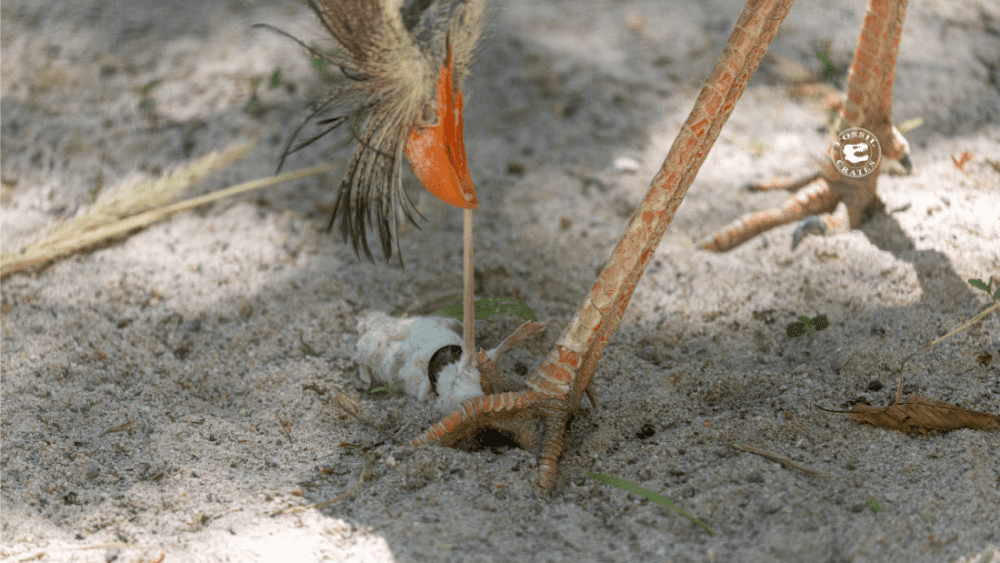The “killing claw” of the red-legged seriema has been found to be a weapon for pinning prey rather than slashing it. As well as demonstrating the fierceness of this leggy bird (made famous after one started a fight with a golf ball), it gives us a good idea of how its ancient ancestors like Velociraptor were using their feet, too.
Without having living dinosaurs to study (John Hammond, we need you) scientists will sometimes turn to the next best thing when trying to study their behaviors (and intelligence). As extant animals go, the red-legged seriema (Cariama cristata) is a very good fit, even if it’s not a perfect match.
“Animal behavior is very complex, and I think we do it a disservice by oversimplifying it and assuming any modern animal is a perfect analogy for an extinct group,” palaeontologist at Brigham Young University, Taylor Oswald, told IFLScience. “The next best thing is to find extant animals that are related and ecologically similar enough that we can start making some broad inferences about function and behavior.”
“Among modern animals, seriemas might be the best proxies we have for deinonychosaurs, since they are birds, which are themselves close relatives of the deinonychosaurs, and because they are carnivorous, terrestrial, and have a preferentially raised sickle claw on their digit IIs.”

Seriemas consistently used digit II for pinning prey and objects. Images courtesy of Fossil Crates
That raised claw on digit II has earned the nickname “killing claw” as it’s long been thought to be an adaptation for hunting, though exactly how it was employed was a subject of debate. Jurassic Park fans will be familiar with the killing claw, as it’s the same one a Velociraptor uses to tap impatiently when hunting down the children hiding in the kitchen.
Some, like that lovable rogue Dr Alan Grant, thought it might be useful for slashing, but a more recent theory, the Raptor Prey Restraint (RPR) hypothesis, suggested it was more likely used for pinning. Researchers on a new study decided to investigate this further by looking at how the red-legged seriema deployed its killing claw while battling with rubber snakes, key locks and mice.
The observational study looked at the behavior of captive seriema at the Wildlife World Zoo, Aquarium, And Safari Park in Phoenix, Arizona, and the Tracy Aviary And Botanical Gardens in Salt Lake City, Utah. It revealed that the birds were using their feet in a consistent and specific way, with the digit II killing claw being used to pin objects and prey while the beak ripped away at whatever it was holding. In short, it seems the RPR hypothesis is probably correct, and it likely extends to the convergently evolved killing claws of deinonychosaurs, too.

Velociraptor may well have used its killing claw in the exact same way as seriemas. Image courtesy of Fossil Crates/Gustavo Monroy
“The sickle shape and raised position of the seriema’s “killing claws” are rather unique and suggest that something more is going on than just self-defense,” explained Oswald. “To put it another way, many claw types can be used as weapons and deal damage, not just sickle claws, so that sickle shape likely has another function.”
“Our observations point to these claws being used for pinning, and it is consistent with what we see in other birds of prey (though the exact setup of the foot differs) and consistent with what has been hypothesized for deinonychosaurs by Dr Denver Fowler and co-authors in 2011.”
In their day, Deinonychosaurs would’ve been using their killing claw to pin animals like invertebrates, lizards and small dinosaurs like Protoceratops, as well as early mammals. As for red-legged seriemas, the menu isn’t that dissimilar, with invertebrates like grasshoppers and beetles, as well as small rodents, lizards, frogs, and other birds. No dinosaurs though, and – of course – the occasional golf ball.
The study was published in the Journal of the Arizona-Nevada Academy of Science.
Source Link: Deinonychosaurs' "Killing Claw" Was Probably Used To Pin Prey, Not Slash It